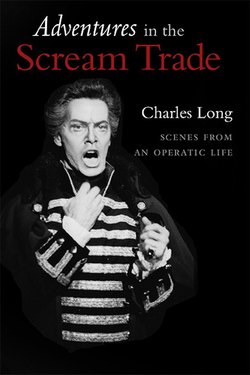Читать книгу Adventures In the Scream Trade: Scenes from an Operatic Life - Charles Long - Страница 5
На сайте Литреса книга снята с продажи.
The Language of Music
ОглавлениеAs intimidating as it seems at first glance, musical notation is quite simple. Each of the eighty-eight keys on a standard piano has a unique location on what is called the Grand Staff. Each note represents a specific pitch, and where the notes are placed on the staff determines which key on the piano is played. The types of notes—whole, half, quarter, and so on—determine duration. One plays the pitch indicated, for the length of time indicated, and remains silent when encountering a rest. That’s all there is to it.
Musical notation is perceived and translated differently by every musician, and it has been promulgated that math skills and musical skills are closely aligned. I don’t know where this started, and though this may be the case in some circumstances, it is not, in my experience, the norm. I, for example, am almost anumeric. I have no mind for numbers and possess the least amount of math skills an adult can have and still function in the modern world. For example, I use my fingers for addition and subtraction. Yet I read music fluently.
Sight-readers can look at a piece of music and perform it, never having seen it before. This ability is highly prized among professionals, and few musicians reach professional status without having acquired it. Singers may attain successful careers without reading music, but all instrumentalists must sight-read with a high degree of proficiency. The goal is to comprehend a page of music as fluently as one would read a newspaper.
My first encounter with a great sight-reader was with a pianist friend in college, Jerry Jennings. For entertainment, some us would go to the library and search for the most difficult work we could find, often a symphonic reduction transcribed for piano or a full orchestra score. Then we would seek out Jerry, who was usually practicing diligently, a lock of black hair falling over his eyes. He would sigh at our approach and bark impatiently, “Okay, what is it now?”
“Play this,” we implored, as we put the music in front of him.
He shook his head, peered over his glasses at the pages covered with black notation, and then … he played. We stood spellbound as he whisked through page after page, never pausing, never hesitating despite key changes and accidentals everywhere. A flurry of notes translated to music without preparation. It was miraculous!
Impressed by what I saw Jerry do, I dedicated myself to learning this ability at my own modest level. My sight-reading of vocal music was good—I had a church job that kept my skills well honed—but I wanted the pianistic facility as well. So I borrowed a church hymnal and religiously played at least five hymns a day, every day, never stopping for mistakes, never repeating a hymn.
Hymns are written in common keys, using the standard chord progressions and structure encountered in most basic music. As I worked my way through the hymnal, its predictable patterns and progressions burned themselves into my musical memory. By the time I had completed all six hundred and thirty-three pages, I had taken a giant leap in my music education. Pursuing the life of a musician requires an intimidating, ascetic level of commitment.
Today, more than forty years later, when I sit at the piano or scan an orchestra score, I still see those patterns that were etched into my brain. Like riding a bicycle, once you learn it, you never lose the skill.
